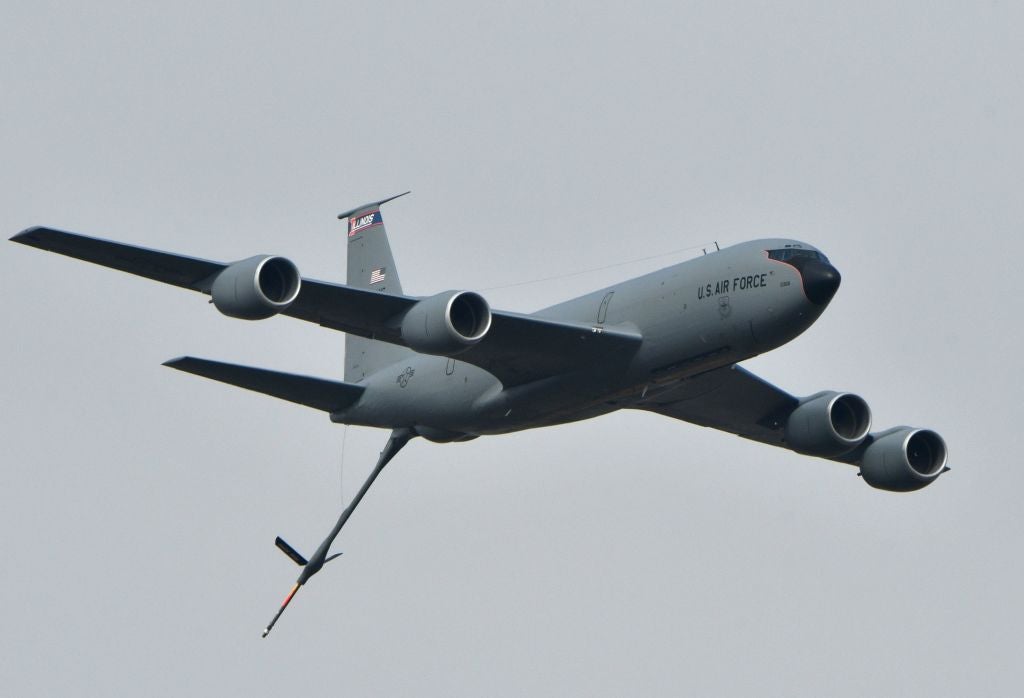
US Air Forces in Europe & Air Forces Africa (USAFE-AFAFRICA ) detailed on 20 April the movement of Air Force tanker aircraft to a new primary location in Poland as part of Copper Arrow, a US Air Forces in Europe activity to strengthen Nato’s eastern flank with forward-stationed and deployed forces.
Over the next few months, 19 tanker units based in the US are scheduled to arrive in Poland to aid in Copper Arrow operations on Nato’s eastern front. Some of these operations will be exclusively focused on supporting Nato activities.
“For the first time in history, US forces will be permanently stationed on the eastern flank of Europe, in Poland,” said Mark Brzezinski, US Ambassador to Poland.
Demand for aerial refuelling capabilities is associated with the need to increase mobility as armed forces become more expeditionary in posture. Greater aerial-refuelling readiness allows air forces to operate at greater range and for longer durations, and Copper Arrow’s repositioning of tankers to Poland emphasises a commitment to respond to threats against Nato allies in the region.
“Our US tankers’ interaction and integration with our Nato allies are a clear demonstration of how we value our partnerships and the importance of enhancing our interoperability,” said Col Timothy Foery, US Air Force Reserve Advisor to the commander of USAFE-AFAFRICA.
The Copper Arrow programme is a joint effort between the US Air Force Reserve Command and Air National Guard, known as a ‘Total Force’ initiative. Its purpose is to bring non-active duty tankers from various locations throughout the continental US to Europe.

US Tariffs are shifting - will you react or anticipate?
Don’t let policy changes catch you off guard. Stay proactive with real-time data and expert analysis.
By GlobalDataThe operation is made possible through the European Deterrence Initiative, which provides funding for operations and initiatives across the theatre. US units have been sending their tankers and assets to Europe on a voluntary basis to provide support for the USAFE operations as a part of Copper Arrow since 2016.
“Copper Arrow is a great example of rapid access to the reserve component to deploy downrange at a moment’s notice to meet the strategic goals in the US European Command’s area of operations,” said Foery.
The Copper Arrow project has received support from various sources including the KC-135 Stratotankers, KC-10 Extenders and the latest addition to the US Air Force’s tanker fleet, the KC-46 Pegasus. These resources have been provided by both the Air National Guard and the US Air Force Reserve Command.
The US-based tanker aircraft began working at their new primary location at Powidz Air Base, Poland, on 10 March after moving from Spangdahlem Air Base, Germany.
“Our US Air Force presence in Europe provides EUCOM with the strategic assets vital to meet its Nato commitment to respond to threats against our allies,” said Maj Gen Joel Carey, USAFE-AFAFRICA director of operations, strategic deterrence and nuclear integration. “Operations like Copper Arrow provide us that valuable tanker support that enhances the readiness necessary to respond to any potential challenge in the region.”
The US European Command is adapting its posture in response to changing conditions in Europe, with a combination of stationed and deployed forces working closely with Nato allies to determine the most effective collective defence and deterrence strategy.
Global tanker aircraft spending is expected to see an upswing in the next few years, with procurement rising from today’s value of $4.5bn up to a peak of $6.6bn in 2024, according to GlobalData.
While the tanker market is predicted to grow at a compound annual growth rate of 2.83% between 2022 and 2032, amounting to $55bn over that period, analysts expect an immediate jump in the next four years as the reaction to the war in Ukraine and rising budgets reinforces the original drivers.



